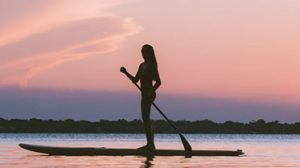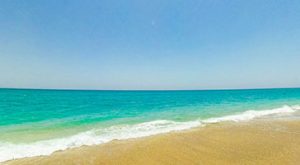By: Terry Gibson / Visit Florida www.visitflorida.com
One of the most beautiful and fascinating stretches of barrier island in Martin County, and for that matter in all of Florida, is Blowing Rocks Preserve, on Jupiter Island, just south of Hobe Sound and north of Jupiter.
In 1969, residents of Jupiter Island donated 73 acres of intact beach, dune and reef habitat, so that future generations would be able to appreciate a disappearing type of ecosystem.
Owned and carefully stewarded by theFlorida Chapter of The Nature Conservancy, the main attraction is the shoreline geological formation for which it’s named. The preserve also includes lush tropical hammocks, mangroves and tawny beaches.
About the Rocks
The largest outcropping of Anastasia rocks in Florida rises like a line of copper shields confronting the Atlantic. Here, waves, wind and scouring sands have long worked to reveal the reef substrate of southeast Florida’s barrier islands, which were created as sea levels dropped about 125,000 during the Pleistocene Epoch.
Once exposed, mineral elements cemented together sand, fossils and shells into rock. As a result, South Florida beaches are veneers of sand over rock substrate also known as “Coquina.”
Photography
Photographers — what a place to capture a unique intersection of and land, sea and sky! Soft morning and evening light lends a golden cast to the rock bluffs. When there’s a swell running, the bluffs repel sapphire-blue waves that explode into rainbow-reflecting spray. These defenses, though, are permeable.
Especially at high tide, seawater forces its way up through erosion holes that constrict the waves into geysers jetting as high as 50 feet above the craggy rocks.
If you open the aperture, you can stop droplets of spray and rainbows mid-air. Slow the shutter down a bit, especially when the breeze if from the west, and your images will tell a longer misty tale about land rising from the sea and the sea slowly reclaiming it.
Snorkeling and Diving
The Atlantic has reclaimed and covers some of the rocks, and those submerged reefs, called “nearshore hardbottom,” are federally designated as Essential Fish Habitat and as a Habitat Area of Particular Concern. The shallow, intertidal and submerged reefs teem with marine life, offering amazing snorkeling, especially on calm days in the spring and summer.
These reefs support at least 257 species of fishes, three species of sea turtle, and 533 invertebrates, including corals, and one of the most clever and fascinating of worms. Upon the Anastasia substrate, Phragmatapoma lapidosa collects suspended grains of sand that the worms use to build honeycomb-like mounds in the surf. These colonies provide cover and food for many species of brilliant reef fish, several crabs, and even wading birds. It’s really important nursery habitat.
Some of these fish that grow up there are so tiny in the spring and summer the water seems filled with sparks.
You may also bump into sea turtles, harmless nurse sharks and tarpon with their silver-dollar scales shimmering in the sunlight. The best snorkeling is accessed from the south end.
Scuba divers swim out from the beach to deeper reefs that host brilliant corals, goliath groupers and big stingrays, among myriad other marine life.
Fishing
Anglers love the structure and vista provided by the reefs. On calm days with high sun, I carry a 10-weight fly rod along the precipice watching for snook, tarpon and jumbo jack crevalle moving through the translucent waters. The elevation offers unique and exciting sight-fishing opportunities. Anglers cast spoons for bluefish and Spanish mackerel, especially in the fall and winter months.
Interpretive Hikes
Visitors enjoy three interpretive hiking trails through the hammocks, including a 40-minute guided nature walk each Sunday morning at 11am. The “Tides of Life” exhibit, in the Hawley Education Center, is open daily free of charge.
Bird Watching
The bluffs offer a good vantage to watch sea birds. Frigates, terns and gannets patrol the teeming waters in search of food. Ospreys also nest in the area. Sandpipers, rusty turnstones and sanderlings dapple after crustaceans that thrive in the beach sands. Migrating warblers winter in the hammocks. Blowing Rocks is indeed a special place where you may encounter an amazing diversity of wildlife.
If you go…
Blowing Rocks Preserve 574 S. Beach Rd., Hobe Sound, Fla., 33455 (561) 744-6668
Photos by Peter W. Cross for VISIT FLORIDA






